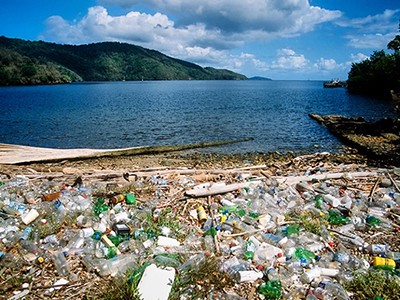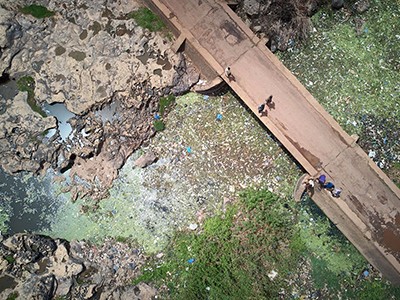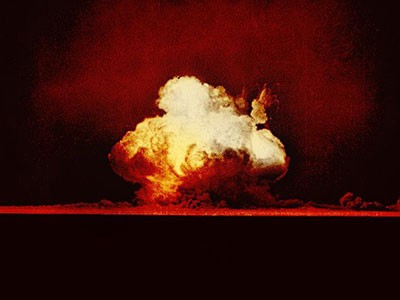On 5 March 2024, the International Commission on Stratigraphy (ICS) — the body responsible for defining units of geological time — announced it was rejecting a proposal to formalize the Anthropocene as a geological epoch that represents an interval of overwhelming human impact on the planet. The Subcommission on Quaternary Stratigraphy (SQS) of the ICS had initiated this process in 2009 by setting up an Anthropocene working group (AWG), which we represent. The aim of the AWG was to clarify whether there was sufficient evidence to formalize the Anthropocene, a process that involves identifying a precise starting point in a specific geological layer, or stratum.
The rejection has prompted much debate, with strong views expressed on both sides. In the past decade or so, however, the term Anthropocene has been adopted widely to describe, analyse and interpret the transformed conditions in which humans now live.
It’s final: the Anthropocene is not an epoch, despite protest over vote
It’s currently used in four main ways by different groups. First, the Earth-system science community, in which the concept arose, and allied scientific disciplines use it to model, assess and warn of the effects of human activities, including the transgression of environmental ‘planetary boundaries’1. Second, scholars in the humanities and social sciences use it to seek to understand how human impacts eventually came to overwhelm many powerful forces of nature, and what that means to the analysis of history, philosophy, politics, economics, society and culture2. Third, the Anthropocene is inspiring many works in museums and in the arts. And fourth, the public and policymakers, urban planners and others use the concept to understand the human transformation of the climate and biosphere, which is essential to formulating and implementing policies of stewardship, mitigation and adaptation1.
With a formal geological definition of the Anthropocene now off the table, at least for the moment, we here explore how the concept can be best understood and used with these wider communities in mind. What should the term fundamentally mean, for both specialized and general use?
Geological origins
The Anthropocene was initially proposed by atmospheric chemist Paul Crutzen in 2000, at a meeting of the Scientific Committee of the International Geosphere–Biosphere Programme (IGBP), a forum dedicated to discussing processes of global change. Crutzen’s intention was for it to represent a new geological epoch3 consistent with the goals of this community. The purpose was not simply to denote an anthropogenically modified Earth. Geologically important anthropogenic impacts stretch back through the Holocene epoch, the post-ice-age chunk of geological time in which we still formally live, and into the Pleistocene epoch that preceded it. Conditions typical of the Holocene include relatively stable atmospheric and ocean chemistries and climate (especially temperature) and, after around 7,000 years ago, a relatively constant sea level. As proposed by Crutzen, the Anthropocene represents an Earth system that has changed irreversibly from those conditions to a state that is still evolving, for which the name Holocene could no longer be regarded as appropriate.
Strikingly similar patterns of various environmental markers, such as levels of different greenhouse gases, bear witness to an abrupt transition, approximating to the change from a horizontal to a vertical line on a graph of the extent of the Holocene (see Supplementary information, Fig. S1). Crutzen initially suggested that departure from Holocene conditions began with the start of the Industrial Revolution and increased coal burning in late eighteenth-century Europe4, although he proposed this before the IGBP data extended that far back. Once further data had come in, a mid-twentieth-century onset was more evident4, linked to the concept of the ‘Great Acceleration’ of many socio-economic drivers and Earth-system responses after the Second World War5.
The transformation this represents has been extensively detailed6–8. Among its main characteristics are: altered atmospheric chemistry; a warming climate; now-irreversible ice-sheet melting and sea-level rise; accelerated erosion and sedimentation; a proliferation of industrial goods, many made of artificial materials such as plastics; a biosphere transformed through species invasions, domestications and extinctions; and the rapid growth of a ‘technosphere’ of globally interlinked human-devised technological systems9.
Background to the proposal
This initial research propelled efforts to pin down the beginning of the Anthropocene, by identifying its start in a geological reference layer known as a global boundary stratotype section and point (GSSP; often called a golden spike). Between 2020 and 2023, 12 research teams formulated proposals for candidate GSSPs and other reference sections in eight distinct geological environments across five continents6.
After much discussion and formal voting, the AWG chose a level that separates the summer and autumn sediment layers laid down in 1952 at Crawford Lake in Canada. The autumn layer is characterized by a marked upturn in plutonium isotopes, coinciding with the first atmospheric hydrogen-bomb test10. This signal is clearly seen in many of the proposed sites (see ‘Consistent boundary’). Crawford Lake was selected because of its undisturbed, seasonally deposited sediment layers that preserve a precise and continuous chronology, its ease of access for future investigations and its protected status in a conservation area. The annually resolved plutonium data are supported by fly ash, nitrogen-isotope and biological markers. To give a specific date and time, a nominal start that coincides with the first atmospheric hydrogen-bomb detonation (codenamed Ivy Mike) was chosen: 1 November 1952 at 7:15 local time at the site on Enewetak Atoll, part of the Marshall Islands, in the Pacific Ocean (19:15 Greenwich Mean Time on 31 October).

Source: Ref. 7
These strata can be precisely correlated around the world — in some places to the nearest year — by a plethora of stratigraphic signals6, enabling a systematic quantitative comparison of processes before and after the time boundary represented by their deposition. The proposal was formally submitted7 by the working group to the SQS on 31 October 2023.
The Anthropocene’s extent
The idea behind defining the Anthropocene within the geological timescale was to provide a precise reference point for the integrated study of a wide variety of phenomena as outlined above, placing contemporary changes in a deep-time context. But it is the lived, experienced and observationally recorded phenomena that go beyond geology and produce the intense broader interest in the Anthropocene: a fully legitimate interest, because the original guiding concept of the Anthropocene addresses the conditions of Earth’s habitability.
During the Anthropocene, Earth’s surface conditions have changed substantially compared with those prevailing throughout most of the Holocene: the planet is now hotter, more contaminated and biologically more degraded. These negative trends are set to intensify and extend further outside the Holocene envelope1. Some of the changes involved are long lasting (such as climate change) and some are irreversible (such as extinctions). They are already exerting pressure on political institutions, legal frameworks and economic relations, all of which are meant to protect human communities and give them meaning.
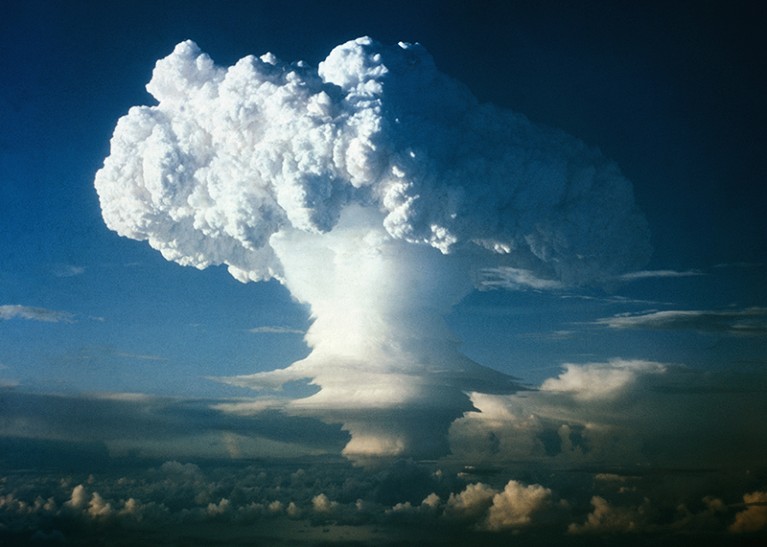
The detonation of the first hydrogen bomb, codenamed ‘Ivy Mike’, in 1952 marked the proposed beginning of the Anthropocene epoch.Credit: Bettmann/Getty
A precise geological definition of the year, day and hour is often not so relevant when the Anthropocene is discussed in these wider contexts. We note also that modest changes in formal boundaries of older geological time units do not generally result in a difference in how they are fundamentally understood. For instance, in 2008, the definition of the Holocene was changed by a different SQS working group from beginning at 10,000 radiocarbon years before present to a formally, stratigraphically defined 11,700 years before present (taken as 2000)11, without changing its fundamental meaning as the most-recent post-glacial interglacial phase.
The definition of the Quaternary period is also informative. This unit encompasses the Pleistocene and Holocene epochs, and was set in 2009 to begin at around 2.6 million years ago, using for practical purposes a pre-existing GSSP and a major reversal of Earth’s magnetic field. Intensification of Northern Hemisphere glaciation had in fact begun slightly earlier, at around 2.7 million years ago, but this does not change the period’s general meaning as representing the commonly considered ‘ice age’12. Other such examples can be found for older time periods. It isn’t the precise boundary that controls the concept of geological time units, but the fundamental characteristics of the periods that they bound. Nevertheless, increasing the precision of their boundaries makes geological time units more consistently useful.
We argue here that an understanding of the Anthropocene as the result of a mid-twentieth-century planetary transformation remains broadly useful across disciplines. This period is closely associated with the beginning of the Great Acceleration — a term coined by US historian John McNeill — and its near-synonyms, such as the ‘post-Second World War economic boom’, ‘the Japanese economic miracle’ from 1946 to 1990s, and Les Trentes Glorieuses, a term describing France’s 30 years of uninterrupted economic growth from 1945 to 1975. Many indicators of human impacts — including greenhouse-gas emissions, metal and mineral production, meat consumption and plastic use — show strong upward trends from the middle of the last century (see ‘Turning point’).
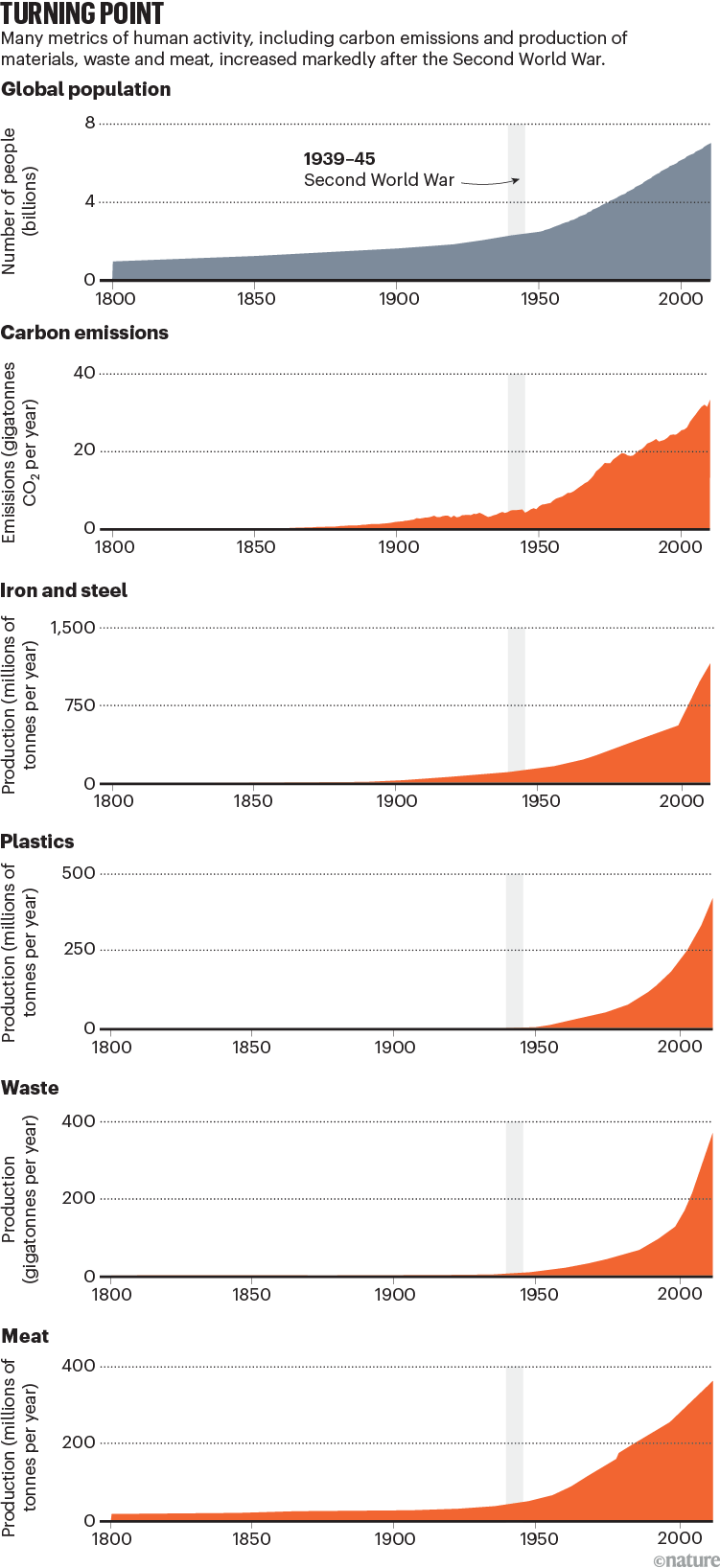
Sources: CO2: Our World in Data (go.nature.com/3tab6kt); others: J. Zalasiewicz et al.
For historians, this post-war period is characterized by a far-reaching transformation of societal values in many parts of the world, including a spread of socialism, communism, liberal democracy, social-welfare programmes and women’s education. These changes were powered by growth in the globalization of industry, trade and commerce in almost all sectors. National and international institutions in both communist and liberal-democratic countries guided these transitions even as these two blocs contended for power. Institutions such as the International Monetary Fund, the World Bank and the precursor of the World Trade Organization were created through international agreements near the end of or shortly after the Second World War. Technological advances also saw an explosion in agricultural food production and contributed to high rates of human population growth globally2,13.
Ditching ‘Anthropocene’: why ecologists say the term still matters
For researchers in anthropology, political theory, international law and ethics, questions arise about the implications of the human forces that start to dominate the web of life and non-organic processes during this interval. Around the world, people are contending with a transformed Earth system, which different cultures experience, understand and respond to according to their distinct world views. The expanding technosphere necessary to power, feed, house and clothe the growing human population has been accompanied by rising global inequality, with the poorest people having seen only a minuscule rise in real incomes. Neoclassical economics and its assumptions of an unlimited capacity for growth are also challenged by an understanding of an increasingly destabilized Earth system and finite planet2.
Older boundary levels have been suggested for the Anthropocene’s beginning, but we argue that they do not capture the fundamental step change, measurable across a wide range of metrics, that a mid-twentieth-century transition does. Alternative suggestions include an ‘Orbis spike’ level at around 1610, which corresponds to a dip of around 10 parts per million (p.p.m.) in atmospheric carbon dioxide concentrations14. This dip has been proposed to result from a decline in population and reduction of farming and forest regrowth in the Americas after mass deaths of Indigenous peoples following the arrival of European colonists. But this dip is small and short-lived compared with the increase in CO2 of around 140 p.p.m. over the past two centuries, which is set to endure. And stratigraphic signals related to a ‘Columbian exchange’ in species between the Americas and Europe — such as the presence of maize (corn) pollen — occur at distinct times in different places over several centuries. They do not capture an abrupt, fundamental transition globally on a par with that seen in the mid-twentieth century.
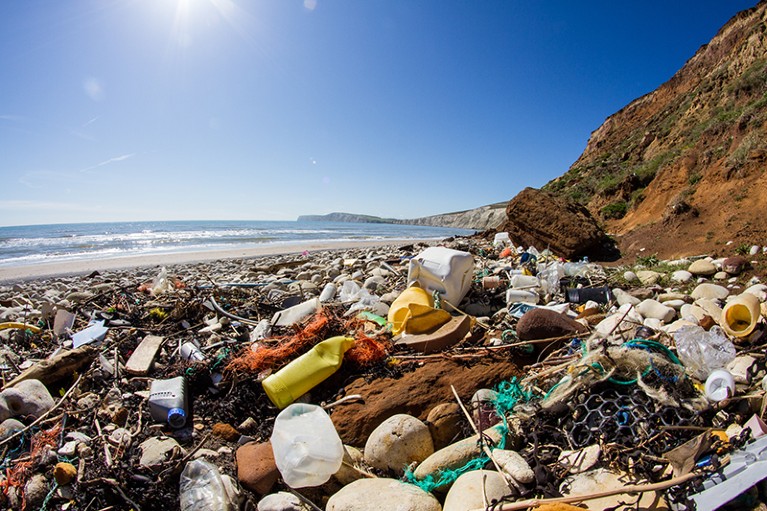
The production plastics and other waste has increased hugely since the 1950s.Credit: Jason Swain/Getty
Similar objections can be raised against other boundary suggestions based on stratigraphic signals — for example, lead-smelting signals dating to around 3,000 years ago found in European peat bogs and Greenland ice15. Some proposed ‘Anthropocenes’ extend yet further back in time, including an ‘Anthropocene event’ that includes all major preserved human impacts at least as far back as 50,000 years ago — a definition that would encompass the Parthenon in Ancient Greece, the Great Wall of China, the pyramids of Egypt, early deforestation, Mesolithic arrowheads and even the Late Pleistocene megafaunal extinctions16.
The recognition of a profound planetary transition in the mid-twentieth century would be strengthened by geological formalization. But even recognizing it as a quasi-formal boundary reflects reality17,18 and encourages clear communication in all disciplines in which the term Anthropocene has come to be used as shorthand for overwhelming environmental change. Interpretations that encompass all significant anthropogenic impacts over time differ markedly and, if all are labelled as Anthropocene, risk avoidable confusion of meaning.
What the Anthropocene is and isn’t
Beyond discussions about when it can most usefully be considered to have begun, the Anthropocene has been interpreted in many ways by the various disciplines in which it has circulated. Questions commonly reflect increasingly divergent perspectives, and diminishing mutual understandings, in our still strongly siloed academic landscape. These differences need to be explored and, when necessary, challenged.
Does the Anthropocene disregard sociopolitical inequalities? In coining and using the word Anthropocene, Earth-system scientists and geologists are said by some to be assigning blame equally to all humans, rather than just to those whose disproportionate consumption of resources is mainly behind the altered (and still changing) planetary state.
Humans versus Earth: the quest to define the Anthropocene
This misconception has arisen because the aims and procedures of Anthropocene physical science differ from those of the humanities and social sciences. The physical sciences are here concerned mostly with measuring and describing Earth’s responses to impacts that are currently overwhelmingly anthropogenic. Researchers are not typically interested in ascribing responsibility to particular people or to specific social, economic and political systems — although a strongly unequal responsibility for anthropogenic change has been noted ever since the concept’s introduction2 and some studies5 include such correlations. The physical sciences also rarely explore the resulting social, economic and political responses or the values that underlie people’s desires and hopes.
In approaches to the Anthropocene, there is thus a division, or spectrum, of disciplinary labour. Physical scientists study Earth’s responses to human impacts during the Anthropocene, whereas social scientists and humanities scholars explore the people and societies behind those impacts. For most scholars in the humanities and social sciences, inequality is central to sociopolitical analyses of the Anthropocene. There is no reason for these approaches to be in opposition; the Anthropocene as understood here provides a framework that implies complementarity and multidisciplinarity.
Does the Anthropocene equate to climate change? Rapid, recent climate change caused by rising atmospheric greenhouse-gas levels poses a clear threat to human societies. Despite efforts to control emissions, more than 100 million tonnes of CO2 are added to Earth’s atmosphere daily. Although climate change is now the most important force destabilizing the Earth system, the Anthropocene includes many other physical, chemical and biological transformations, interlinked with global economic, political, social and technological phenomena.
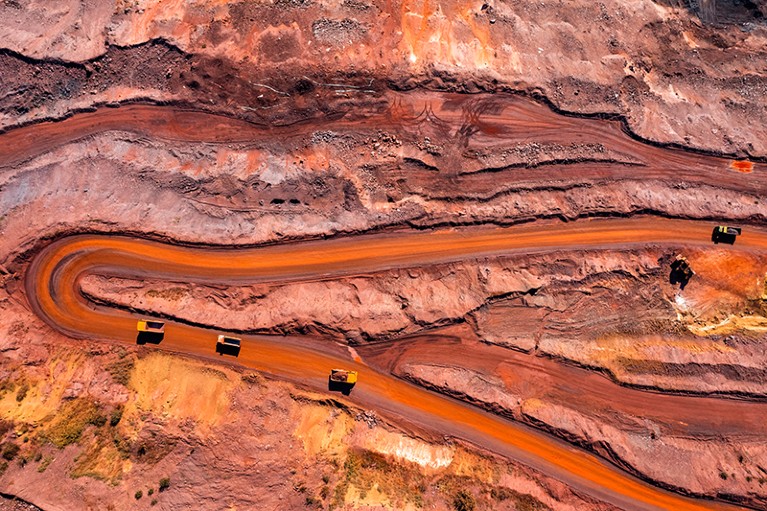
Expanding activities such as mining industries make their mark on the planet.Credit: Anton Petrus/Getty
When Crutzen introduced the term in 2000, atmospheric CO2 levels were ‘only’ around 370 p.p.m., or about 85 p.p.m. above pre-industrial maximum concentrations. Average global temperatures were some 0.5 °C above pre-industrial levels (taken as the average from 1850 to 1900), and so still within the envelope of conditions reached at other times during the Holocene. In 2000, warming might have been said to be incipient: but even then, the total changes to the Earth system justified Crutzen’s proposal of a new epoch. By 2022, atmospheric CO2 levels were nearly 420 p.p.m., with an average temperature of 1.5 °C above pre-industrial values. Factoring in the effects of other greenhouse gases, notably methane, nitrous oxide and chlorofluorocarbons, brings the CO2 equivalent to around 523 p.p.m. in 2022, a level perhaps not seen since the mid-Miocene epoch, some 17 million years ago. Not surprisingly, then, Earth overall is now hotter than at any time in the Holocene. Meanwhile, biodiversity loss and the increasing homogenization of the planet’s once-distinct biogeographical assemblages make up another key aspect of the Anthropocene19. Climate change is an important component of the Anthropocene, but it does not define it.
Did the Anthropocene begin when its causes did? The boundaries of geological epochs are not generally taken at the beginnings of planetary transitions, but at points at which they can be readily recognized and practically used. Many evolving developments, activities and ideas ultimately led to the transformation of the Earth system in the mid-twentieth century. They reach back to the emergence of Homo sapiens and the mastery of fire and complex communication skills, across the development of animal domestication, agriculture, urban societies, writing systems, globalized trade, the steam engine, capitalism, the Haber–Bosch process for fertilizer production and so on. The causes of the Anthropocene necessarily precede the start of the epoch. By analogy, the formal definition of the Holocene at 11,700 years ago comes towards the end of a long, complex, stepped pattern of warming and sea-level rise caused by deglaciation that had started around 8,000 years earlier10. Subsequently, the Holocene, operating as an interglacial interval not greatly different from previous ones, provided the physical circumstances for civilization to develop, conditions that the Anthropocene is now overriding.
A common sense
The Anthropocene was originally understood by Crutzen as not only representing humanity’s influence on Earth’s geological record (he was well aware of earlier anthropogenic impacts), but also reflecting a system with physical characteristics that had, since widespread industrialization, departed from the prolonged, relatively stable conditions of the Holocene.
An Anthropocene concept anchored to begin in the mid-twentieth century is aligned with both the Great Acceleration and a fundamental shift in Earth’s state. Understanding the Anthropocene in this way would prevent the current confusion of the term meaning different things in different contexts. It complies with the term’s originally intended meaning, and also reflects a clear evidence-based geological signature20. The concept is congruent with the term’s use in Earth-system science21 and more widely, such as by new and emerging institutions, such as the Center for Anthropocene Studies at the Korea Advanced Institute of Science & Technology, Daejeon, South Korea, the Centre of Excellence for Anthropocene History at Stockholm’s KTH Royal Institute of Technology and the Max Planck Institute of Geoanthropology in Jena, Germany. It highlights geology’s role in addressing problems of societal concern and is also applicable in the social sciences and humanities with respect to the enormous societal upheavals, changes in energy production and globalization of trade that have taken place. Policy and international law will also benefit from an unambiguous definition, putting beyond doubt that we are now in a time of transformed planetary functioning wrought by overwhelming human impacts.



